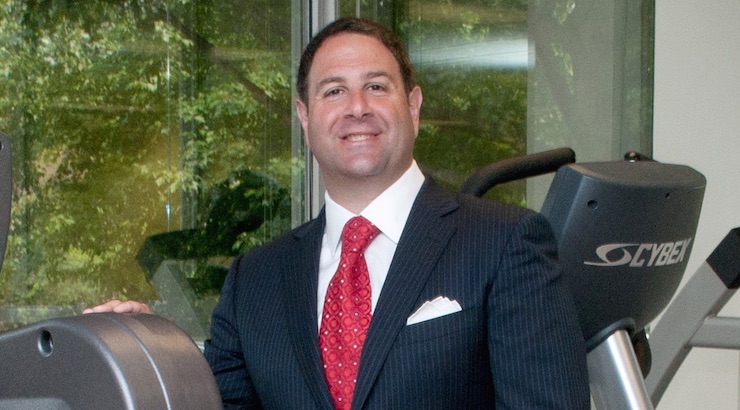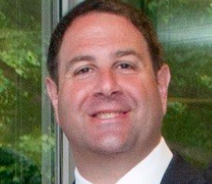Gallucci On Common Sense Is Needed For Better Injury Prevention
SoccerToday announced John Gallucci, Jr., MLS Medical Coordinator is the popular soccer news site’s newest columnist and will be writing a regular column on Injury Prevention and Treatment.
A dynamic expert in injury prevention, rehabilitation, sports medicine and athletic conditioning, Gallucci is the Medical Coordinator for Major League Soccer (MLS), overseeing the medical care of 600 professional soccer players. Gallucci is the former Head Trainer of the New York Red Bulls MLS team and is a Sports Medicine consultant for professional athletes in the NHL, NFL, NBA, MLB, and USA Wrestling. Gallucci, Jr. is also President, JAG Physical Therapy & JAG Pediatric Therapy.
Here are Gallucci’s insights on the importance of common sense in injury prevention, his concerns on over-use injuries and the importance of concussion awareness — and what it means to be the MLS Medical Coordinator for 600 pro soccer players.
Diane Scavuzzo: Do enough people use common sense in preventing soccer related injuries?
John Gallucci, Jr.: When we look at the common sense components of preventing soccer injuries, the biggest issue we have is youth soccer players are continuously sustaining injuries due to overuse problems.
Basically, “too much, too soon” in a pre-season, repetitive actions with no rest, or no true equal balance of strengthening and conditioning programs. So when we look at the common sense of things we need to understand that there is specific training that needs to be done at all levels, especially when you are looking at children between the ages of 6-12, where there is growth and physical development taking place. We need to truly understand that there needs to be a progression and build of up training, also hydration being an integral part of practice, a flexibility component is very important which ultimately decreases the incidents of muscle strains.
Diane Scavuzzo: What is your recommendation for concussion prevention? What do you recommend if a player suffers a head impact and is thinks he or she may have sustained a concussion? What are your return-to-play guidelines for players diagnosed with concussions?

John Gallucci, Jr.: When we talk about a recommendation of a concussion prevention program, we really need to look at the aspect of educating parents, players, referees and coaches on what the true signs and symptoms of a concussion are.
There is no way that we are going to be able to stop every single concussion from happening, but through proper education we can definitively teach coaches, players, referees, and parents the signs, symptoms, and early recognitions of a concussion, and get the soccer player cared for quicker, and get them under the care of a physician immediately to ultimately decrease the onset of long term affects that this athlete may have. Also, it is important for parents to understand that there is a component of rehabilitation, or as we like to say, “return to play” which is detailed in my book Soccer Injury Prevention and Treatment: A Guide to Optimal Performance for Players, Parents and Coaches. It is very important that parents and coaches definitively understand that their children must be put through a “return to play” protocol after the sustainment of a concussion.

When looking at an athlete that has had some sort of head-to-head contact, elbow-to-head contact, head-to-floor contact, or as we know in indoor soccer, head-to-wall contact, we have to understand that we don’t just have to have contact to get a concussion. As we know, the brain sits in the cerebral fluid and is a buoyant matter, and ultimately what happens is that when the body stops too quickly and abruptly the brain will shift within the skull and can possibly get damaged by rebounding off the front and/or the back of the skull causing a concussion. It is important to understand that you don’t just have to have contact.
When we look at a “return to play” protocol, most of our states and the CDC have a “return to play” protocol that’s anywhere between 5-6 steps and that protocol and progression basically takes precedence of any returning athlete and a medical doctor trained in concussion management ultimately needs to truly clear that athlete. The 5-6 steps go from anything from rest and no competition, to a progression of increasing heart rate at a low max, to basically progressing the athlete to full-go. As long as there are no signs and symptoms between these steps, then there are no issues.
Diane Scavuzzo: U.S. Soccer and MLS held the first-of-its-kind medical symposium at 2015 NSCAA Convention last month – how was it? What was the reaction of the coaches?
John Gallucci, Jr.: U.S. Soccer and Major League Soccer held their first medical symposium at the 2015 NSCAA Convention. It was a fantastic turnout by coaches and a great collaboration between the U.S. Federation medical staff and Major League Soccer’s medical staff to put out unbelievable information as it pertains to current sports medicine topics and current concepts of concussion protocols.
It was attended by the medical directors from the US Federation and the medical directors from Major League Soccer, which is Dr. George Chiampas of the US Federation and Dr. Larry Lemak of Major League Soccer. The discussions were guided by both of them on topics including hydration, proper treatment of lower extremity injuries, overuse injuries, emergency action plan procedures, concussion signs and symptoms and the “return to play” protocol. This was a first-of-its-kind collaboration, and there are definitively more to come. It’s a very exciting effort that’s been put together by Major League Soccer and the US Federation and we are excited to see this continue.
 Diane Scavuzzo: What are the biggest medical issues facing the youth, amateur and professional soccer player?
Diane Scavuzzo: What are the biggest medical issues facing the youth, amateur and professional soccer player?
John Gallucci, Jr.: Some of the biggest medical issues that are facing youth and amateur, as well as professional soccer players are again those overuse injuries and especially in the youth level people really understanding the rules of the game, and making sure that children understand that they need to participate within the rules.
When you see some of the issues out there, the soup du jour of the moment happens to be concussion, based on the highlighted emphasis of the media, but it is important to understand that there are numerous other injuries that a soccer player can sustain including lower extremity, such as ankle, foot, knee, and hip problems, all the way to spine, shoulder, and elbow problems.
It is important for us to understand that when we are looking at an athlete and we are conditioning a soccer player we really need to look at the most common injuries in soccer, which are lower extremity injuries and that’s why I recommend that a tremendous amount of soccer players look into a lower extremity strengthening protocol such as JAG Physical Therapy’s L.E.S.S. Program, which is highlighted in my book, Soccer Injury Prevention and Treatment. A lot of the research for this concept of workout to decrease the incidence of lower extremity injuries was based on a tremendous amount of research articles in decreasing injuries in the lower extremities in soccer players. So it is important that coaches, parents, and players try to decrease their own injuries by truly training the appropriate way.
Diane Scavuzzo: What does the medical coordinator for Major League Soccer (MLS) do? What does it mean to oversee the medical care of more than 600 professional soccer players and protect their careers and teams?
John Gallucci, Jr.: My position as the Medical Coordinator of Major League Soccer is to assist our Medical Director, Dr. Larry Lemak in organizing and implementing the policies and procedures of medical care throughout our league in collaboration with the 20 Major League Soccer teams and their medical staffs.
This consists of utilizing the medical policies and procedures to provide the best optimal care to take care of over 600 athletes. There are guidelines in reference to different protocols on hydration care, concussion care, physicals, implementations of our workman’s compensation program, first report of injuries, and various other subject matters. As it pertains to what I do in overseeing the medical care, it’s basically to assist the team in making sure the provision of healthcare for all of the athletes is done accordingly and within the appropriate credentialing manner of Major League Soccer’s requirements.






